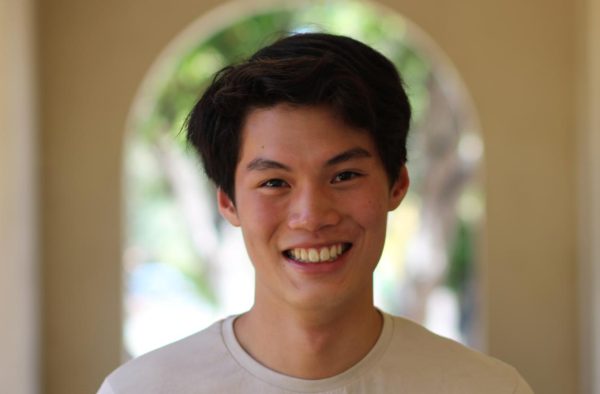Rise in Aggression
When Economics teacher Grant Blackburn returned to school after COVID-19 restrictions eased, he found himself and his students in need of new footing.
“We’re all struggling to figure out how to rebalance the way that we live our lives,” Blackburn said.
Across the nation, the return to school has seen unprecedented levels of behavioral struggles.
According to the National Criminal Justice Association, the social isolation and lack of emotional support from quarantine increased the prevalence of mental health issues in young people and hindered behavioral development, with The National Center for Education Statistics reporting an 87% decrease in socio-emotional development in public schools during the 2021-2022 school year following COVID-19.
And in 2023, EAB, an educational research institution, reported that 70% of educators have seen a rise in behavioral disruptions in the classroom.
The American Psychological Association surveyed 9,370 teachers from all 50 states and found that one third of teachers had experienced verbal or threatening violence from students.
Critically, such violence has caused problems for teachers. The APA found 49% of surveyed teachers had a desire to quit or transfer jobs directly due to concerns about safety and school climate.
According to the California Department of Education’s DataQuest database, PAUSD had 20 suspensions for violent incidents with injury and 53 counts of violent incidents with no injuries in the 2021-2022 school year.
Within the district, Gunn High School and Palo Alto High School combine to make up 38 out of 73, or 52%, of violent incidents. Gunn had 12 violent incidents with injury and 16 violent incidents with no injury. Paly had one violent incident with injury and nine violent incidents with no injury.
District Action
Following a post-pandemic surge in student behavioral issues, Behavior Support Services Manager Nestor Ramos said the district is working to improve its support for staff and students.
“We have added a number of new staff to support students including 12 new Behavioral Intervention Coaches –– one for each site,” Ramos said. “We now have a total of 22 coaches in the district.”
In Superintendent Don Austin’s weekly update, Austin said the Behavioral Intervention Coaches are meant to support general and special education.
“BICs provide school personnel with behavior support, coach staff on student-specific behavioral interventions, provide behavioral crisis support, collect data and assist staff with the implementation of behavior plans or strategies/interventions that will help support individual students or the entire classroom,” Austin wrote.
According to documents sent to The Campanile from PAUSD Director of Fiscal Services Charen Yu, the district has invested $3,655,430.94 into behavioral support since the end of 2022.
To supplement the funding, District Public Information Officer George Pinckney said the district has established 28 new positions for providing behavioral services and support.
“In addition to behavior intervention coaches, PAUSD has hired seven mental health and wellness associates, one family engagement specialists, one school-based mental health therapist, one therapeutic special education teacher and six program aides,” Pinckney said.
Pinckney also said all new mental health and wellness associates hires are district employees and not contractors.
“When they are hired, they feel a greater sense of belonging,” Pinckney said. “In addition it could help them connect with students and families more.”
Ramos said the district is also placing renewed emphasis on Safety Care training.
“Safety Care is the method where we train staff specifically on de-escalation tactics and strategies,” Ramos said. “It is for teachers when they might have to deal with students in their class who might engage in more frequent disruptive behavior.”
While in the past, training was more specialized to certain staff members, Ramos said the training course this past month, Understanding and Managing Behavior, was given to all.
“In the past we did have a smaller scale training, and it was mostly geared towards instructional assistants and education specialists,” Ramos said. “It was open to all, but the majority of the folks that were in attendance were mostly special education.”
For training this year, Austin said more than 1,300 staff members attended, including teachers, principals, custodians, food service employees, instructional assistants, bus drivers and administrators.
Moving forward, Ramos said the district will prioritize increasing communication with the community about new behavior initiatives in the coming months.
“We’re planning to organize a speaker series for parents to provide education and support,” Ramos said. “We want to make the behavioral support and knowledge more accessible to families.”
According to Palo Alto Educators Association President Teri Baldwin, Infinite Campus has also now been updated to notify teachers if a student has exhibited violence in the past.
“This awareness is essential because it helps us determine if there’s a behavior plan we need to work on and continue,” Baldwin said. “We’re grateful for this change because in elementary school, it’s a bit simpler with one teacher per student, but in secondary education with multiple teachers, it’s crucial to ensure all teachers are aware.”
Baldwin also said this change is not intended to isolate students or label them negatively.
“It’s really about being aware, so we can support all students, especially those showing these propensities,” Baldwin said. “This proactive approach allows us to step in and hopefully prevent any incidents before they occur.”
And Baldwin said teachers are thankful for this change.
“It just helps them be more prepared for teaching. And it’s in one place, it’s easier to find.”
Nguyen also said the flags in Infinite Campus will help teachers more effectively teach students.
“I think the Infinite Campus change is definitely a good move in the right direction,” Nguyen said. “The better we know our students, the better we know how to meet their needs. And if sometimes, they are prone to act a certain way, then we can be more prepared in helping prevent them from acting that way.”
When behavioral situations arise on district sites, there are various different levels of threat assessments, according to Safety, Security and Disaster Preparedness Manager Mike Jacobs.
“We have transient threats, which are the types of threats that may have been made in the heat of an argument,” Jacobs said. “It’s not really a risk, whereas a substantive threat is something that is more long term. A serious threat would be something physical without a weapon. A very serious substantive threat would be something with a weapon like a firearm or a knife.”
Jacobs said when situations occur, each site has a threat assessment team that will sit down and evaluate the situation.
“We utilize the Virginia Model, which was developed by the US Secret Service,” Jacobs said. “(The model involves) a multidisciplinary group of individuals: administrators, certificated staff, classified staff, mental wellness professionals and physical safety like myself.”
In addition, in the yearly armed assailant training required by Assembly Bill 1747, Jacobs said there is an additional emphasis placed on behavioral training.
“One of the videos that I use in our training is a video that was created by the Sandy Hook Promise, and the video shows how a student dealing with bullying was showing different behavioral warning signs throughout the entire video,” Jacobs said. “And they were missed because there were so many other things going on in school.”
Staff Reaction
Though staff members across the district say they applaud the district for making safety and dealing with violent students a priority, many say they want to see more done.
Meb Steiner, president of the Palo Alto chapter of the California School Employees Association, the union for classified employees, said the inclusion of more behaviorists has already created a positive impact on the existing staff.
“Our behavior team was very happy that there was going to be more of them, because they were stretched very thin,” Steiner said.
However, Blackburn said no one has fully explained the role of BICs to teachers.
“I don’t understand how a behavior coach would operate in the system I’ve operated under for 23 years,” Blackburn said. “In the framework I’m currently under, I’m not thinking to myself, ‘Oh, that kid needs to go to a behavior coach.’”
And Steiner said she is worried about the district’s ability to hire and retain BICs.
“There’s still a lot of questions,” Steiner said. “Things are going to continue to be ironed out, added and worked on.”
In regards to those future plans, Steiner said the first place to start is more comprehensive training.
“Another big piece of staff safety is training our staff really, really well to know how to prevent a situation from escalating,” Steiner said.
While district officials say they addressed this with new Safety-Care training, Blackburn said the training wasn’t as useful as intended.
“The topic was so important,” Blackburn said. “The problem was that the training we got was horrible. All they did was PowerPoint slides. There was very little interaction with the crowd.”
Daniel Nguyen, math teacher and Paly’s site rep for the Palo Alto Educator Association, agrees and said teachers want more specific training.
“It was nice that the district recognized that some training was needed. I think we still need more training,” he said. “Teachers want more specific training, like if this happens, consider doing A, B or C. Everyone would benefit with a little more depth.”
Student Reaction
Though teachers are typically on the receiving end of behavioral aggression, students in the classroom are also affected by violent incidents.
Senior Sofia Rosen-Syrrist said she can recall multiple instances of witnessing such behavior.
“One time, a classmate was arguing with a substitute teacher and it angered (the substitute),” Rosen-Syrrist said. “It was enough to the point where the (substitute) teacher put the student in a closet and locked it for a long time.”
Only 9 years old at the time, Rosen-Syrrist said she felt frightened.
“I felt really terrible for the student,” Rosen-Syrrist said. “More than anything, it was scary, and I honestly remember everyone feeling like that.”
Despite the severity of the situation, Rosen-Syrrist said she thinks this incident was resolved appropriately.
“From what I know, the teacher was not allowed to substitute at (my school) ever again,” Rosen-Syrrist said.
While unaware of the new plans being put in place by the district when asked about them by a Campanile reporter, Rosen-Syrrist said teachers need to be better equipped to deal with similar situations.
“There should be certain courses that a teacher is required to go through, especially if you are working with younger students,” Rosen-Syrrist said.
Looking Forward
Ramos said the district hopes to closely monitor the number of incidents this year compared to previous years in order to measure the efficacy of its new initiatives.
“We’re going to be keeping a close eye on any trends or patterns in overall occurrences and see if through the efforts and this investment, we (are) able to scale down the number of these occurrences,” he said.
Ramos also said analyzing this data could aid in revealing contributing factors to aggressive behavior.
“Diving into the data to look at patterns (can) maybe lead us to answers,” Ramos said. “It’s not only behavior. There is also a mental health piece. We can look into the impact of (that) and all other variables.”
Clinical psychologist Judy Smith said this is an important step to help the district gain a larger understanding of what drives such types of behavior.
“Few kids constantly lash out unless there is something happening in their personal lives where someone lashes out at them. They’ve been taught aggressive behavior,” Smith said. “Also feeling depersonalized, like they’re not an important part of the school system, feeling weak, as though they don’t have value.”
Smith said regardless of student behavior and contributing circumstances, intervention is crucial.
“(Sometimes) schools simply transfer students who exhibit these behaviors to other schools, which is ridiculous and does not solve anything,” Smith said. “These students need intervention and need counseling.”
Steiner said this counseling is not only essential in addressing violent student behavior, but also for preparing students for their lives beyond school.
“There’s the classic ABCs, which is antecedent, behavior and consequence,” Steiner said. “I like to work on the antecedents. I want to set a kid up so that they are successful.”
Steiner said standardizing expectations for students will assist the process of addressing these behaviors.
“The expectation of behavior, what is appropriate, should be the same for all students,” Steiner said. “A diagnosis (is) not an excuse to act badly or not meet the expectations, whether it be academic or behavioral, but the way you go about achieving that is going to be different.”
And Steiner said the ongoing conversation around behavior is vital in making positive strides in the district.
“Everyone has to be on the same page, otherwise messages are inconsistent,” Steiner said. “(This conversation) was the start of the idea that we’re all doing this as a community. We need to address this problem as a community.”






